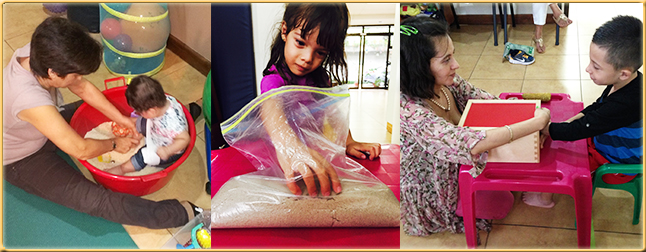Sensory Integration
Is the process of the nervous system to receive, filter, organize, analyze and respond to the sensory information that is entering the body and brain. Sensory integration allows us to interact with our environment. The development of sensory integration begins in utero and continues developing after birth. Maturity of sensory integration is necessary for body awareness, balance, coordination, motor planning and self esteem.
Sensory integration therapy seems like a way of play but involves specially selected activities to stimulate deficient areas of development. The person with difficulties in sensory integration can show the following characteristics: hyper or hypo sensibility to textures, avoidance to being touched, poor visual contact, poor coordination and balance, fear of certain movements, short attention span, difficulty relating to other children, language delays, academic difficulties and/or difficulties with handwriting.

- Physical Therapy
- Occupational Therapy
- Speech Therapy
- Early intervention through neurodevelopmental play
- Neuro-developmental Technique
- Importance of Therapeutic Play
- Myofascial Release (MFR)
- Craniosacral Therapy (CST)
- Kinesiotaping
- Treatment for Scoliosis
- Visual Stimulation
- Yoga for the Special Child ®
- Handwriting Without Tears
- Sensory Integration
- Compression Vest Therapy (Therasuit)
- Myofunctional Therapy
- Chronic Pain
- Modalities
- Soft Tissue Mobilization
- Pelvic Physical Therapy
- Treadmill Training
- Food School
- (CME) Cuevas Medek Exercises
